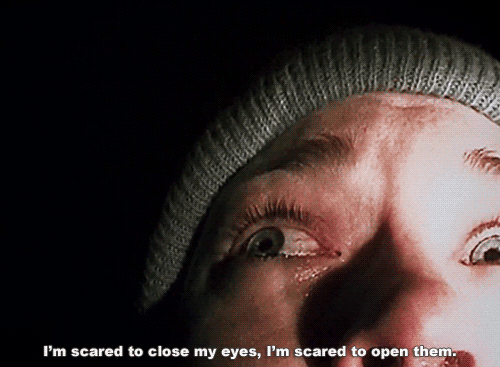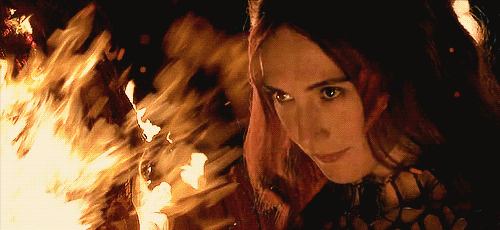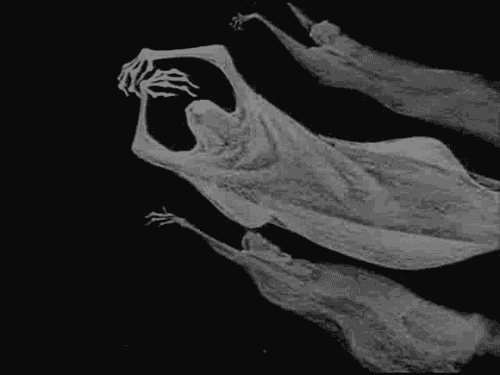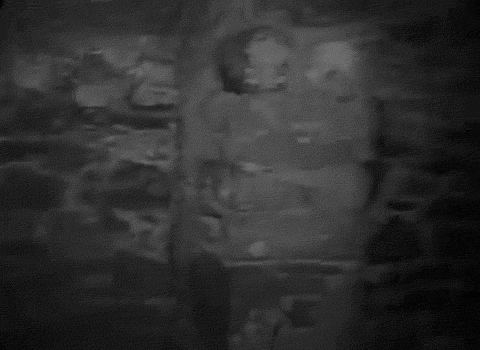I wanted to believe the Blair Witch was a real thing, more than I’ve wanted anything else in the world, probably — and maybe she is, but I sure as heck can’t find any information on her and her story other than what’s being purported through the 1999 movie.
In my research, though, I came across someone similar, someone whose story I’m confident actually fed into the Blair Witch’s: Moll Dyer.
This had me thinking — how many other American witch tales inspired the story of the Blair Witch? At least two, from what I’ve found. With elements taken from each, it’s easy to see where the Blair’s filmmakers were able to come up with their thrilling lore.

Moll Dyer
Similarly to the Blair Witch, Moll Dyer lived in Maryland in the late 17th century, c. 1697. That winter was said to be one of the harshest, coldest winters of the late century, and as such, several members of the village fell ill. This was traced back to dear Moll Dyer, who was accused of laying a curse upon the villagers and was then equally accused of being a witch.
Despite her protests, no one would believe her. One night, wishing her gone and the curse to be lifted, a mob swarmed her house with torches, hoping to burn it down with her inside. Rather than being burned alive, however, Moll managed to escape out the back and fled into the backwoods.
As it was the coldest winter of the century, naturally Moll didn’t make it very far. Days later, her frozen body was discovered where she’d fallen against a rock, hands still spread on its surface. Supposedly, those hands left behind marks in the stone, and along with them, a curse on the village and those who drove her from her home, and to her death.

The land around her demolished cabin is said to carry the same curse, as no crops have ever grown there again. An unusual number of lightning strikes are also reported in the area.
The stone reported to carry her fallen indentations was moved into the town in 1975, and reburied next to the Local Historical Society. Legend goes on to say that the rock itself is also cursed, and anyone who stands too close for an extended period of time is likely to feel ill, dizzy, and possibly even faint.
Her spirit continues to haunt Leonardtown even to this day, especially along the road named after her: Moll Dyer Road. Supposedly, a white dog and thick mists are known to cause accidents on the street, both attributed to the spurned ghost of Moll Dyer.
The Bell Witch
The legend of the Bell Witch begins in the summer of 1817 in Adams, Tennessee. John Bell was walking through his fields, when he spotted an unusual creature — something he claimed to have the head of a rabbit and the body of a dog.
So shocked by this strange animal, John shot at it, but missed. Following this encounter, things in the Bell home because to go awry, including strange sounds and howls, and bedsheets being pulled from mattresses. Eventually one of the Bell daughters, Betsy, became the main focus of abuse, reportedly hit, slapped, kicked, pinched, and poked with pins on the regular, all by an unseen entity.
The Bells, with no other options, turned to a family friend named James Johnston for help. After only one night in the home to experience the same occurrences as the Bells, Johnston told them that he believed the entity was a spirit similar to what could be found in the Bible. After that night, rumors of the Bell’s poltergeist spread throughout the town and further, and people soon began traveling long distances just for a chance at experiencing the ghostly encounter.

By this point, the entity was said to begin having loud conversations with itself, supposedly even speaking a sermon that was being given simultaneously 13 miles away from the home. Johnston went on to attempt to trick the witch, asking specific questions that no one else in the home would have known. He asked something along the lines of, “What does my step-grandmother in North Carolina say to her slaves when she thought they did something wrong?”
To which the witch purportedly replied, “Hut tut, what has happened now?” in the grandmother’s mimicked voice and accent.
On another occasion, and Englishman arrived at the Bell home to investigate the claims and began speaking of his family back home — at which time, the witch began to mimic the voices of his English parents. Fleeing the following morning, the Bells later received a letter from the man claiming the Bell Witch went on to harass his family back in England.
The story of the Bell Witch ends as John Bell was mysteriously poisoned, and later died. While the witch didn’t leave the Bell home for some time after, eventually the witch told the family she would be taking her leave, but would return again in seven years, in 1828. Right on time, she returned. But Betsy, who lived in the house then with her husband, paid the witch no mind, and she fell silent again.
It is said that after departing completely from the family, the Bell Witch went on to inhabit a nearby cave, understandably renamed the Bell Witch Cave, which carries the weight of its own strange and unexplained occurrences.

While the history of early America is rife with stories of magic and witchcraft, few things are true — but in these cases, it’s clear, some witches did not pass on without a fight, and remain where they died to wreak havoc on the living.
Kelsey graduated from Boise State University with a BA in Visual Arts, and is currently working as a freelance writer, while doodling anime on the side with one hand and petting cats with the other.
